 Flying over FairbanksAlaska in their Piper Super Cruiser with his wife Joan, John Chalupnik suffered a massivebrain hemorrhage. Joan suddenly found herself Pilot In Command. She wasn’t really a pilot,but providentially, she had attended the AOPA Air Safety Foundation’s Pinch-Hitter programjust the day before. After regaining control of the plane she called for help on 121.5.With assistance from controllers and another pilot she was able to fly to the airport andsafely land the plane. She credited the Pinch-Hitter course with saving her life. Oftennon-pilots can make it safely back to terra firma even without Pinch-Hitter skills, butmany flying companions and passengers have perished when the pilot quit flying. Somehow itdoesn’t seem very responsible to leave someone you care about with no backup when there isa very viable alternative available.
Flying over FairbanksAlaska in their Piper Super Cruiser with his wife Joan, John Chalupnik suffered a massivebrain hemorrhage. Joan suddenly found herself Pilot In Command. She wasn’t really a pilot,but providentially, she had attended the AOPA Air Safety Foundation’s Pinch-Hitter programjust the day before. After regaining control of the plane she called for help on 121.5.With assistance from controllers and another pilot she was able to fly to the airport andsafely land the plane. She credited the Pinch-Hitter course with saving her life. Oftennon-pilots can make it safely back to terra firma even without Pinch-Hitter skills, butmany flying companions and passengers have perished when the pilot quit flying. Somehow itdoesn’t seem very responsible to leave someone you care about with no backup when there isa very viable alternative available.
![]() In the thirty five years since the AOPA Air Safety Foundation (ASF) first offered thePinch-Hitter course, over 11,000 non-pilots have taken the full course, which untilrecently included flight training. An estimated ten times that number have attended thefour hour ground school portion of the course. The Pinch-Hitter name is a registeredtrademark of the Foundation, but despite that, the term has come to be widely used whendiscussing similar courses offered by flight schools and other organizations. Among theorganizations that offer, or have offered at various times, a similar course are the 99s,Mooney Aircraft Pilots Association (Mooney Mate) and the American Bonanza Society (CockpitCompanion). When we think "Pinch-Hitter," we think of a non-pilot taking overwhen the pilot is incapacitated and safely landing the plane. While that is certainly theprimary objective, the course has many other benefits for both pilots and their non-pilotcompanions.
In the thirty five years since the AOPA Air Safety Foundation (ASF) first offered thePinch-Hitter course, over 11,000 non-pilots have taken the full course, which untilrecently included flight training. An estimated ten times that number have attended thefour hour ground school portion of the course. The Pinch-Hitter name is a registeredtrademark of the Foundation, but despite that, the term has come to be widely used whendiscussing similar courses offered by flight schools and other organizations. Among theorganizations that offer, or have offered at various times, a similar course are the 99s,Mooney Aircraft Pilots Association (Mooney Mate) and the American Bonanza Society (CockpitCompanion). When we think "Pinch-Hitter," we think of a non-pilot taking overwhen the pilot is incapacitated and safely landing the plane. While that is certainly theprimary objective, the course has many other benefits for both pilots and their non-pilotcompanions.
More than Just Emegency Skills
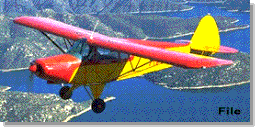 Many of us regularly fly with another non-pilot. Most often it is our spouse or SO(significant other — not second officer) Others regularly fly with business associates orother family members or friends. Some fly with you because they enjoy it, but many areuncomfortable with flying to some degree or another. One important benefit of aPinch-Hitter course is that it nearly always allays non-pilot’s fears, spoken or unspoken,about flying. It is probably worth it just for that alone.
Many of us regularly fly with another non-pilot. Most often it is our spouse or SO(significant other — not second officer) Others regularly fly with business associates orother family members or friends. Some fly with you because they enjoy it, but many areuncomfortable with flying to some degree or another. One important benefit of aPinch-Hitter course is that it nearly always allays non-pilot’s fears, spoken or unspoken,about flying. It is probably worth it just for that alone.
Your flying companion can be a tremendous asset. With training they can make yourflying safer, easier and more enjoyable. The Pinch-Hitter course includes basicinstruction in aircraft control, navigation and radio usage. It’s great to have someknowledgeable assistance when you need it. With a little effort on your part, yourcompanion can take over some of your routine jobs and you can better concentrate onflying. It’s also great to have someone able to understand and double check what you’redoing. In the event of an emergency, wouldn’t it be nice to have someone in the right seatwho can help rather than panic? I’ve provided some tipson how to make sure you do your part to make their job easier, in case such anemergency occurs.
Flying In Four Hours
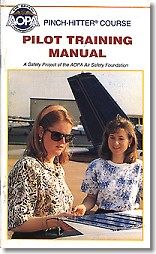 All this sounds like a lot to accomplish in fourshort hours of ground school and about an equal amount of flight instruction, spread over twodays. Did I say learn to fly in just four hours? Say again? Well, maybe we left out a fewimportant details.
All this sounds like a lot to accomplish in fourshort hours of ground school and about an equal amount of flight instruction, spread over twodays. Did I say learn to fly in just four hours? Say again? Well, maybe we left out a fewimportant details.
AOPA Air Safety Foundation has, indeed, taught thousands to fly in only four hours offlight instruction. However, instead of a pilot’s certificate, they receive a Pinch-Hittercertificate. They aren’t a full fledged pilot, but they are fully prepared to perform asan emergency replacement pilot. Most other organizations giving such course take about thesame amount of time, some a little longer than others, depending upon the experience ofthe CFI and organization involved.
Still, it boggles the mind. With only four hours of flight instruction and four hoursof accompanying ground instruction, Pinch-Hitter students are ready to fly in case of anemergency. They won’t actually solo except in the unlikely event something goes terriblywrong during some future flight, but they are prepared.
Not Just For Singles
 My wife took the course a few years back and I was impressed. The results speak forthemselves. She relates her experience in theaccompanying article. The course is broken down into four primary areas; controllingthe airplane, navigation, radio navigation and emergency communications and airportarrival and landing. The instruction is obviously not the same as that received by someonegoing through a private pilot course. The emphasis and objectives are very different.
My wife took the course a few years back and I was impressed. The results speak forthemselves. She relates her experience in theaccompanying article. The course is broken down into four primary areas; controllingthe airplane, navigation, radio navigation and emergency communications and airportarrival and landing. The instruction is obviously not the same as that received by someonegoing through a private pilot course. The emphasis and objectives are very different.
The range of age and experience, as well as aircraft is also impressive. Using the ASFPinch-Hitter course as a gauge, the youngest were a brother and sister, age ten andeleven, who flew their father’s Cessna 172. As long as the student can reach the rudderpedals, they can fly. The oldest Pinch-Hitter graduate was a 79 year old grandmotherflying her husband’s big twin, an Aero-Commander 680.
Having your flying companion take the Pinch-Hitter course can have a significant impacton your own flying enjoyment. Many who regularly fly with us do so under duress, neverreally enjoying the experience. Some are really scared or maybe a bit frightened, othersjust nervous and uncomfortable. For many, it just isn’t much fun for them as it is for us.When it isn’t fun for them, it probably isn’t as much fun for you. Becoming a Pinch-Hitterwill change their attitude. Those who already enjoy flying will also benefit, as will you.
One very legitimate concern expressed by many attending the course my wife took is whatwill happen if you keel over from a heart attack or are somehow incapacitated? Said onemother, "I worry about the kids if their father is flying and something happens. Ifinally realized I could, must, do something."
Overcoming Inertia
Getting to that point, when your flying companion realizes they should do something,isn’t always easy. Most pilots report it took plenty of encouragement to get theircompanions to sign up. The results are well worth the effort. Participants heaped praiseon the course. "Should have done it years ago" was a frequent comment heardafter completion.
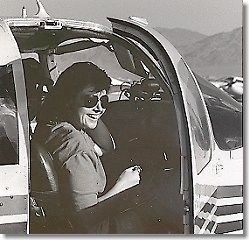 I can speak from personal experience. Ittook ten years of trying to get my spouse to take the course. While she never voiced anyconcerns about flying, I was the one who worried about what would happen, if somethingwent wrong. Turns out I am typical of many pilots. I saw the need, but couldn’t easilypersuade her to do it. Despite her initial reticence, she was all smiles by the time shewas done.
I can speak from personal experience. Ittook ten years of trying to get my spouse to take the course. While she never voiced anyconcerns about flying, I was the one who worried about what would happen, if somethingwent wrong. Turns out I am typical of many pilots. I saw the need, but couldn’t easilypersuade her to do it. Despite her initial reticence, she was all smiles by the time shewas done.
The course isn’t just for female spouses or "significant others," though theydo still make up a majority of the participants. About 20% of the students are men. Manybusiness associates are also taking the course. Any non-pilot who regularly flies inGeneral Aviation aircraft is a good candidate.
Most students fly their own aircraft, though a fair number fly rented aircraft.Students have flown everything from simple Cubs to heavy twins like the Cessna 414. Dualcontrols are required, of course, but brakes on the right side are not.
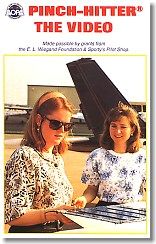 While the ASF has gotten out of the actual flighttraining business, they still offer a "Pinch-Hitter Instructor Guide" to be usedby whomever gives the actual instruction. Traditionally, the two or three day course iscomprised of two ground school sessions of two hours length and four one hour flyingsessions, two each following each ground school. AOPA ASF still offers the four hourground school portion of the course, which is immensely popular. It costs $99, except atAOPA Expo, when it is included in the normal Expo registration fee. Last year in Orlando,300 took the course in three classes of 100 each. The Pinch-Hitter classes held by the AirSafety Foundation in 30 cities around the country every year are much smaller, usuallyjust 10 – 25 attendees.
While the ASF has gotten out of the actual flighttraining business, they still offer a "Pinch-Hitter Instructor Guide" to be usedby whomever gives the actual instruction. Traditionally, the two or three day course iscomprised of two ground school sessions of two hours length and four one hour flyingsessions, two each following each ground school. AOPA ASF still offers the four hourground school portion of the course, which is immensely popular. It costs $99, except atAOPA Expo, when it is included in the normal Expo registration fee. Last year in Orlando,300 took the course in three classes of 100 each. The Pinch-Hitter classes held by the AirSafety Foundation in 30 cities around the country every year are much smaller, usuallyjust 10 – 25 attendees.
The AOPA Air Safety Foundation has also produced "Pinch-Hitter The Video"which is available for $29.95 from Sporty’s Pilot Shop and includes the "Pinch-HitterPilot Training Manual." This 40 minute video is a pretty good introduction to thePinch-Hitter concept, though the four hour live course is far better, in our opinion. Thevideo serves as an excellent review for Pinch-Hitter recurrent training.
The Pinch-Hitter Curriculum
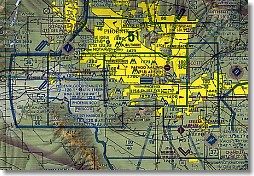 The initial ground school leads off by covering the basics offlight and navigation. Before beginning, the instructor, an experienced CFII, will ask thepilots who inevitably accompany the Pinch-Hitters to class to leave the room. This allowsthe students to ask questions freely, without intimidation. Students are first encouragedto ask questions, not only about the technical side of flying, but also about those thingswhich bother them, their fears and anything else on their mind. Once the instructor putsthe students at ease, answering their most personal questions about flying and theirfears, it is time to get into the meat of the course.
The initial ground school leads off by covering the basics offlight and navigation. Before beginning, the instructor, an experienced CFII, will ask thepilots who inevitably accompany the Pinch-Hitters to class to leave the room. This allowsthe students to ask questions freely, without intimidation. Students are first encouragedto ask questions, not only about the technical side of flying, but also about those thingswhich bother them, their fears and anything else on their mind. Once the instructor putsthe students at ease, answering their most personal questions about flying and theirfears, it is time to get into the meat of the course.
The skills required to safely pilot a plane are distilled down to only the basicnecessities. Using slides, an overhead projector and the ubiquitous model airplanes theinstructor explains how to control the aircraft. Correct terminology isn’t stressed,everyday language is often used to convey the information. If a student uses"steering wheel" instead of "yoke," they won’t be rebuked. Studentshave been known to "steer" instead of "turn." "Gas" gets themessage across just as well as "throttle." Whatever works for the students.Control inputs and results are often related to driving a car and riding a bicycle. Everyeffort is made to keep it as simple as possible.
In this session pilotage is emphasized and students learn how to read a sectional andhow to keep track of where they are so they will know where they need to go to find anairport in an emergency.
 The second half of the ground school deals withradio navigation and emergency communications and airport arrival. Amazing as it sounds,they manage to make VOR navigation understandable and practical in one short session. Theemergency frequencies are planted firmly and permanently into the heads of thePinch-Hitters. Practical communications are stressed. For these pilots, "HELP!"works as well, maybe better, than "Mayday." ASFprovides a checklist for the Pinch Hitter, which I have modified slightly for my own use.
The second half of the ground school deals withradio navigation and emergency communications and airport arrival. Amazing as it sounds,they manage to make VOR navigation understandable and practical in one short session. Theemergency frequencies are planted firmly and permanently into the heads of thePinch-Hitters. Practical communications are stressed. For these pilots, "HELP!"works as well, maybe better, than "Mayday." ASFprovides a checklist for the Pinch Hitter, which I have modified slightly for my own use.
Into The Air
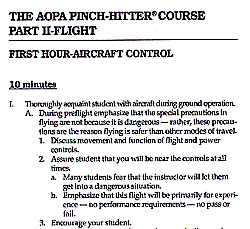 When it comes to the flying portion of thecourse, instructors follow a prepared syllabus, modifying it as necessary to fit thestudent’s needs. After a comprehensive walk-around, reviewing what was covered in theground school, it’s time for the first flight. Pinch-Hitters fly from the right seat, justas they normally would. The first hour of flying emphasizes aircraft control. Simple powersetting rules are demonstrated. Students are generally taught that a good cruise powersetting is between 20 and 25. That works whether you are using MAP or RPM to set power.Precision is not important. It is rare that such general guidelines doesn’t work, in whichcase the instructor will give the student a special one.
When it comes to the flying portion of thecourse, instructors follow a prepared syllabus, modifying it as necessary to fit thestudent’s needs. After a comprehensive walk-around, reviewing what was covered in theground school, it’s time for the first flight. Pinch-Hitters fly from the right seat, justas they normally would. The first hour of flying emphasizes aircraft control. Simple powersetting rules are demonstrated. Students are generally taught that a good cruise powersetting is between 20 and 25. That works whether you are using MAP or RPM to set power.Precision is not important. It is rare that such general guidelines doesn’t work, in whichcase the instructor will give the student a special one.
The student learns how to control altitude and direction of flight. Turns are limitedto no more than 15 degrees bank. The importance of trim is taught. Stalls are avoided,students are simply taught to never get closer than 15 mph/kts to the bottom of the whitearc until ready to touch down. Every effort is made to ensure the student has a successfulfirst flight and acquires the basic skills to fly the aircraft safely, maintaining controlat all times. Pattern entry and landing is demonstrated with the instructor emphasizingthe visual clues, power and trim settings. Once in a position to set down, the studentpulls back the power and the instructor allows the aircraft to settle onto the runway androll out to a stop.
After a break, the second flight begins with the student performing the takeoff andthen pilotage is introduced. The student learns to transfer the basic piloting skills fromthe first lesson into purposefully flying to where they want to go. The student alsostarts to handle more of the communications with ATC, easing into that necessary skill.This time the student follows the instructor through on the landing.
The Tricky Stuff
 The third flying session is spent mostly practicing VORnavigation and ATC communications. Students gain control experience while tracking radialsand complying with ATC instructions. The session finishes with additional practiceapproaches, emphasizing positioning the aircraft over the runway and setting up thelanding.
The third flying session is spent mostly practicing VORnavigation and ATC communications. Students gain control experience while tracking radialsand complying with ATC instructions. The session finishes with additional practiceapproaches, emphasizing positioning the aircraft over the runway and setting up thelanding.
The final hour in the air pulls everything together. Students practice emergencyprocedures; assuming control, contacting ATC and navigating to a strange airport andlanding. By the conclusion of the day the student will have made a number of landingsentirely on their own. Students returning from their final lesson emerge from the cockpitwith wide grins and that same self-satisfied, triumphant expression as do regular studentpilots who have just completed their first solo.
For the flying portion, the choice of an instructor is key to successful completion ofthe course. Experience counts for a lot, this isn’t the place for a young CFI juststarting out or building time. With rare exception the ones used in the past andrecommended by ASF are mature, often greying experts with decades of instructing in theirlogs. Making the student, who may well be very nervous and who may well not really want tobe there, feel comfortable is vital and experience has shown that most feel morecomfortable with an older instructor. Moreover, all that experience gives them animportant edge when they have to teach so much in so little time.
A Better Intro Flight
Here is an interesting statistic for those who have tried, without success, to interesttheir flying partner in learning to fly. According to the ASF, about 45% of Pinch-Hitterstudents have gone on to regular flying lessons. This, despite the fact that most neverprofessed any interest in, or were opposed to learning to fly. While a lot more expensive,this is a much more effective introduction to flying than the typical 30 minute introflight.
Bottom line is that pilots do become incapacitated and if and when they do, the fate ofany other passengers is likely in the hands of whomever is sitting in the right seat. Ifthat person is a non-pilot, then their having taken a Pinch Hitter course, even just theground school, could mean the difference between life and death. So, I urge you to haveyour non-pilot companion read my wife’s accompanyingarticle and then just go do it!


































